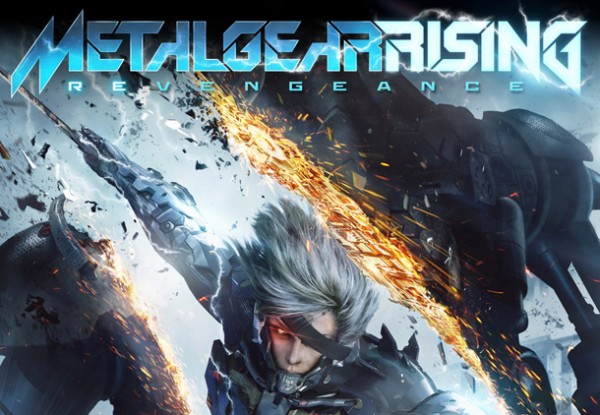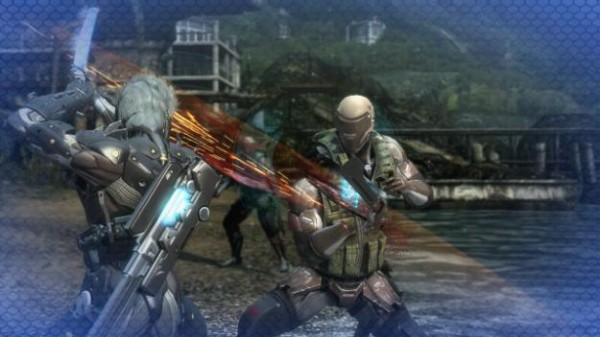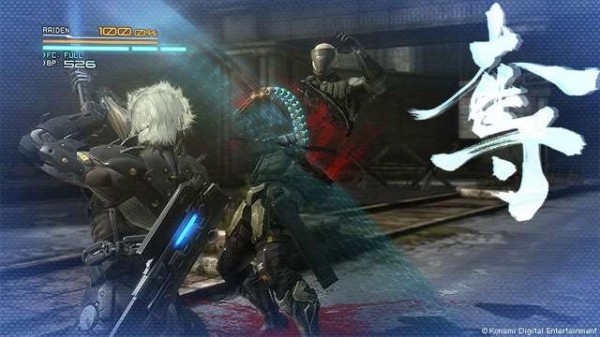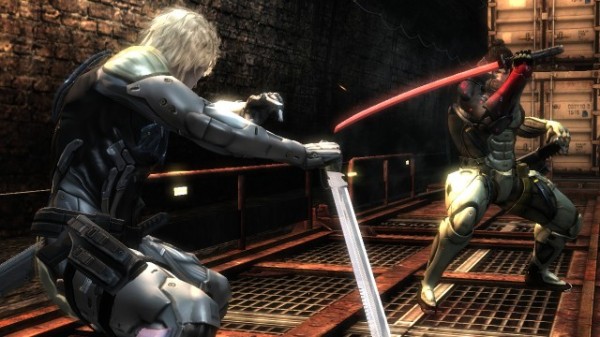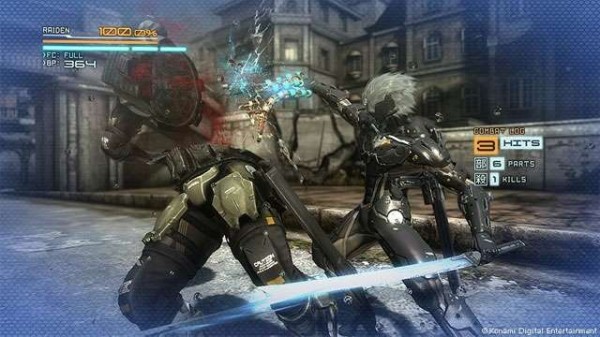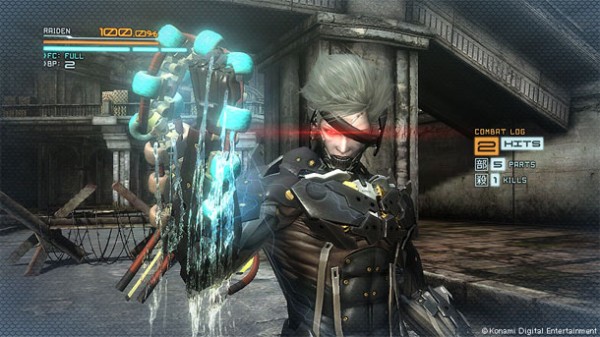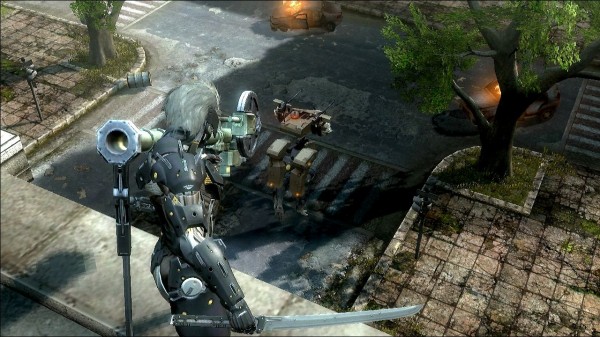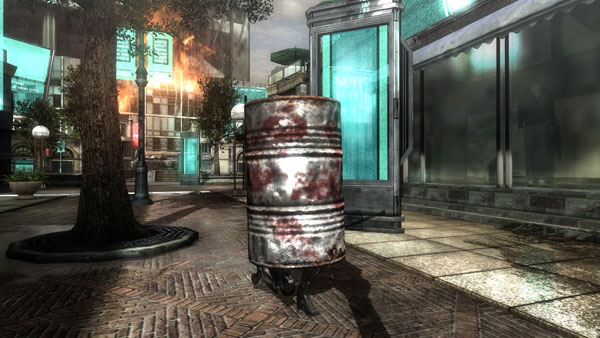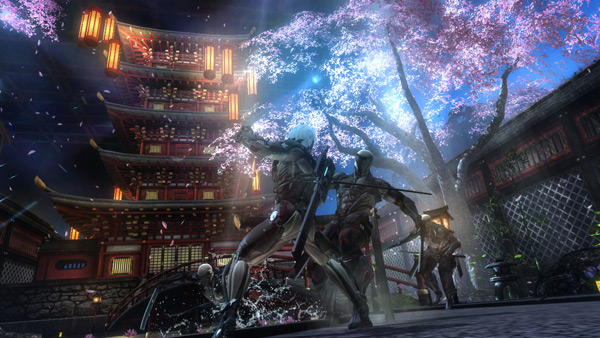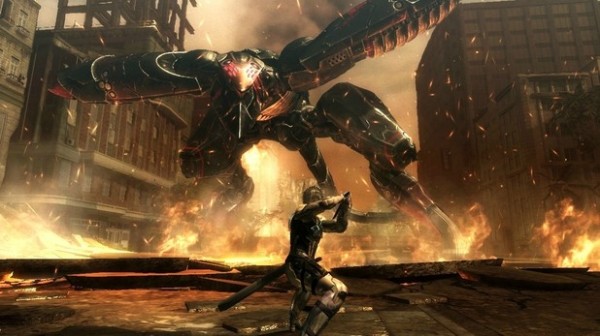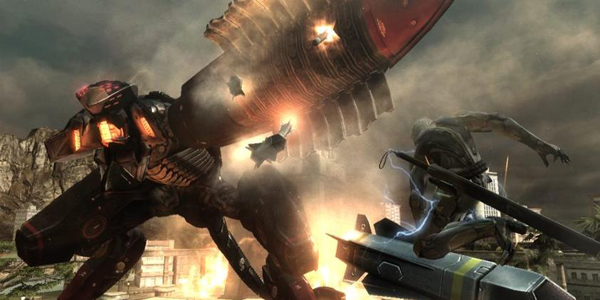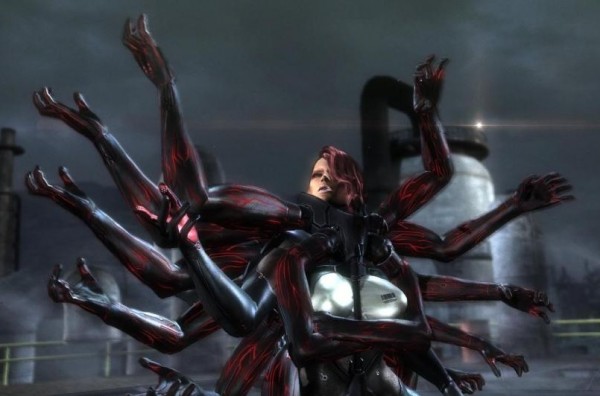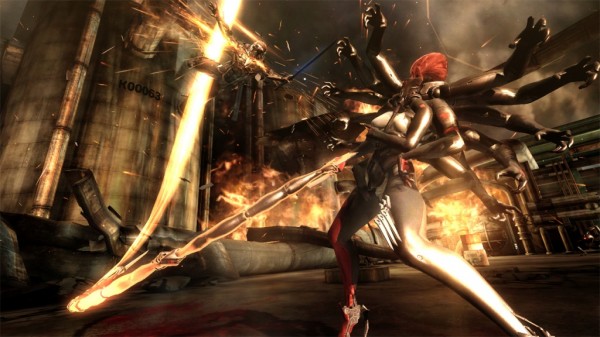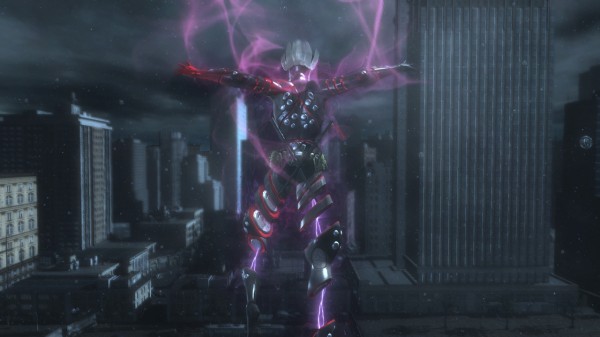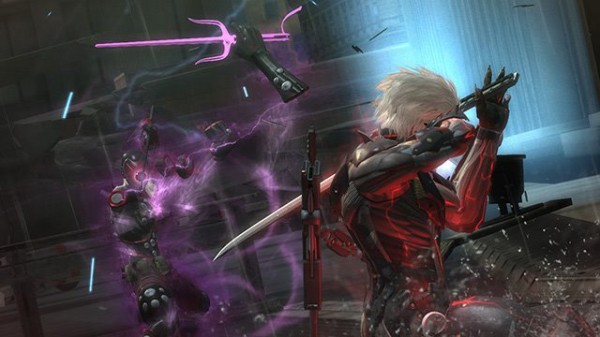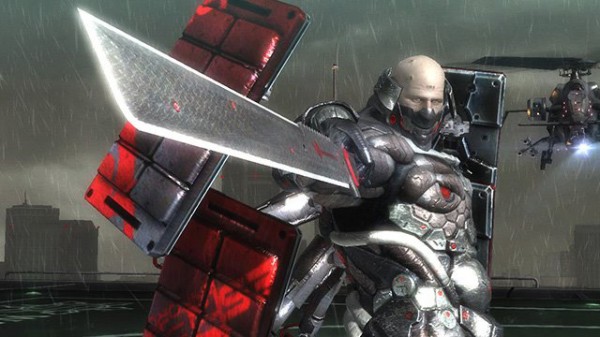What do you get when you take samurai cinema motifs, mix it with the over-the-top absurd action styling of Platinum Games, and season it with the trademark giant mechs and philosophical waxing of politics and war of Hideo Kojima? You get the recipe for Metal Gear Rising: Revengeance.
Rising’s story begins four years after the end of Metal Gear Solid 4. The Sons of the Patriots are no more and the PMCs that make up a large chunk of the globe’s war economy has switched from using nanomachines to improve and control their soldiers to flat out making them into cyborgs. We pick up with Raiden working for a “good” PMC called Maverick. At the point that the story picks up at, Raiden and Maverick is wrapping up helping the prime minister of a fictional African country with bringing peace to his country.
However, not everyone is keen on the idea of war torn African countries achieving peace, chief among them being other PMCs, as it is bad for business. Enter the Desperado PMC, who attack the caravan Raiden and the prime minister are in. It is during this attack that you learn of two of the game’s antagonists, Sundowner and Jetstream Sam. Sundowner succeeds in killing the prime minister, and Sam humiliates Raiden by cutting off his left arm and cutting out his left eye. He would have killed Raiden had Maverick troops not arrived in time.
Raiden then dons a new cyborg body and begins his quest for revenge by hunting down Desperado, only to uncover a bigger and more evil plot. Desperado is working with another PMC called World Marshal, who is being funded by a US senator named Steven Armstrong. What World Marshal is doing is taking in the impoverished street kids in third world countries and removing their brains. They then subject those brains to a similar kind of VR training program that turned Raiden into a child soldier when he was younger. Their ultimate goal is to implant these child soldier brains into cyborg bodies. Raiden changes his priorities from purely personal revenge to that of personal revenge and avenging the children being processed by World Marshal, thus the name of the game.
Unfortunately the story doesn’t really develop much further than that. While you can have CODEC chats with the other key members of Maverick to flesh out the story a little bit, it doesn’t improve things much. The biggest issue here is the severe lack of development for the members of Desperado and Sam. Steven Armstrong gets some additional development at the end of the game, but again it isn’t much.
And this is a damned shame, as the bad guys in this game are pretty great. Also, one other thing that bugged me. Raiden’s wife and son are only mentioned in passing in this game, which makes it awkward as Courtney, the female member of Maverick who handles saving the game for you, often flirts with Raiden. Thankfully, everything else about this game makes up for the lackluster story and character development.
The gameplay in Rising is stellar. Finally a game gives players proper swordplay mechanics. Rising achieves this with its Blade Mode, a mode that is activated by holding down one of the left shoulder buttons. While in Blade Mode the world around Raiden slows to a crawl and you are able to give quick horizontal and vertical slashes with the normal and heavy attack buttons, or use the analog sticks for more precise cuts. Using Blade Mode drains Raiden’s energy bar, though. The game presents you with a few ways to replenish the energy bar during the course of the game.
You can use in game items or even upgrade Raiden’s sword to absorb energy from enemies as you attack them, but my favorite way of doing it is with the Zandatsu. The game’s Zandatsu mechanic is when you critically damage an enemy and then enter Blade Mode, a part of their body will be highlighted with a red square. Cut them through the square and the resulting slash will expose their energy source. Pressing O on the PS3 or B on the 360 will then have Raiden rip out their energy source and crush it in his hand, instantly refilling both his health and energy bars. Doing successful Zandatsus will also give you a higher score.
While you aren’t performing Blade Mode attacks or pulling off Zandatsus, the combat is more or less your standard hack ‘n slash action game gameplay. You will be spending most of your time in combat mixing up normal and heavy attacks to rack up high scores, while also dodging and parrying enemy attacks. You can also use secondary weapons like RPGs and grenades, but I find these are best used on large crowds of enemies, bigger armored enemies, or bosses, because they are time consuming to use and can disrupt the rhythm of combat. You can also, contrary to popular belief, be stealthy in this game. Two of the items you can use are the series’ trademark cardboard box and a metal drum. You can also perform instant kill moves to enemies by sneaking up behind them.
The boss battles are the crown jewel of this game. There are seven total bosses in this game. They range from an upgraded Metal Gear RAY in this game’s opening chapter to the three members of Desperado’s Winds of Destruction, to Jetstream Sam. All of the boss fights are great for their own reasons. The fight against the RAY was amazing just for the sheer over-the-top nature of it, for example.
I am in particular a fan of the fights against the Winds of Destruction. The multi-armed Mistral was a fight on two fronts as you try to get in close to her whilst she hits you from a distance with her whip spear while also having to shake off the annoying Dwarf Gekkos that would latch onto Raiden and hold him still. Monsoon was an absolute visual treat as his body is segmented, only being joined together by magnetic forces, making it very hard to hit him as he simply separates his body parts to avoid the hits. He also uses his magnetism to chuck vehicles at you. Sundowner’s fight was ingenious in that he has these six giant panels of armor that move around and that deal damage to you should you hit them head on.
But no boss fight in this game comes close to the final boss fight. That one fight alone was good enough for me to suggest at least a rental to everyone. If you play video games, you need to experience this game’s final boss.
Now moving on from the boss battles, as much as I don’t want to, this game has limited unlockables and upgrades. You can unlock VR training missions by finding hidden Desperado branded laptops in the game’s levels. You can purchase new costumes for Raiden, including an outfit that makes Raiden don a sombrero and poncho. You can also upgrade Raiden’s sword, upgrade his health and energy bars, and buy new moves for Raiden to do. But the best unlockables you can buy are the weapons used by the Winds of Destruction and Sam. My particular favorite is the sai used by Monsoon. When wielding his sai, you can magnetically shoot it at enemies and pull them close to you in a manner not to dissimilar to Mortal Kombat’s Scorpion’s “Get over here!” move.
Now to address some of my few problems I have with the gameplay in Rising. For starters, the camera in this game is a pain. A bad camera is a cardinal sin in a game with so much happening on the screen like Rising. Often times I would have the camera pull in the opposite direction when I tried moving Raiden around, especially when I was having Raiden run. Speaking of Raiden running, that is my other prime complaint in this game. His ninja run ability, which allows Raiden to move really fast and move over most objects in the game’s world, can be wonky at times. On occasion he would jump to an object I wasn’t directing him towards.
Also, this game is short. Obviously, Rising was built for multiple playthroughs, and a short length in and of itself isn’t bad. Especially with the quality of gameplay it had. Still, all told there are eight chapters in the game when you include the prologue chapter, and one of the chapters is just a stop gap between two boss fights that lasts only around ten minutes. The length of the game doesn’t bother me, but it might be a sticking point for others.
Graphically Rising isn’t the prettiest game out there, but it is far from ugly. While it doesn’t even surpass its predecessor, Metal Gear Solid 4, it can hold its own against the majority of games released this console generation. There is some impressive tech, physics wise, behind the objects in this game’s world as you cut them to itty bitty pieces. And the visual flair of the boss fights are things you have to see to believe.
When it comes to the audio in Rising, I am split. On one hand the voice acting is overall pretty acceptable. You don’t really ask for the best performances out of the voice actors in a hack ‘n slash game, so in that regard I am impressed by most of the voices. However, Quinton Flynn absolutely phones it in as Raiden in this game. I thought he did quite decently in his previous two performances as Raiden, but he is really bad in this game, which is unfortunate as his voice is the one you’ll be hearing the most. I get why Flynn kept switching his Raiden voice up during the course of the game, as Raiden does have a split personality, but he doesn’t put any weight behind his soft Raiden voice and his crazy Raiden voice? Well let’s just say his crazy Raiden voice makes me absolve Christian Bale of all the sins he committed with his Batman voice. It is that bad, people.
On the other hand, the music in this great is amazing. The boss fight theme songs in particular are top notch and just draw you into the action. They peak at just the right moments and compliment the boss fights perfectly. I could go on and on about the boss fight themes, but I figure why not just let you listen for yourself. Here, just listen to the theme to the Metal Gear RAY fight.
Metal Gear Rising: Revengeance is not a perfect game. It just has enough flaws to stop it from being perfect, but I still think Platinum Games knocked it out of the park with the gameplay, and just wish that in the hopeful sequel the story is handled better. For Platinum Games fans, this game is a must buy. You should go out and buy it right now. For Metal Gear fans and everyone else, I say play the demo first or to rent it to see if it is your cup of tea, and maybe wait for a price drop.
Despite its flaws, Platinum Games has crafted a very fun and addicting game while also creating the cyborg ninja game Metal Gear fans have been wanting. Rising also has done a great job at re-establishing Raiden as a viable leading character in video games, now that he has been given a chance to stand on his own, as opposed to being in the shadow of Solid Snake. I can’t wait to see what Platinum Games has in store for the hopefully eventual sequel.
Metal Gear Rising: Revengeance is rated M for Mature. It retails for $60 US and was released on February 19th, 2013 for PS3 and Xbox 360. I played the PS3 version for this review.

